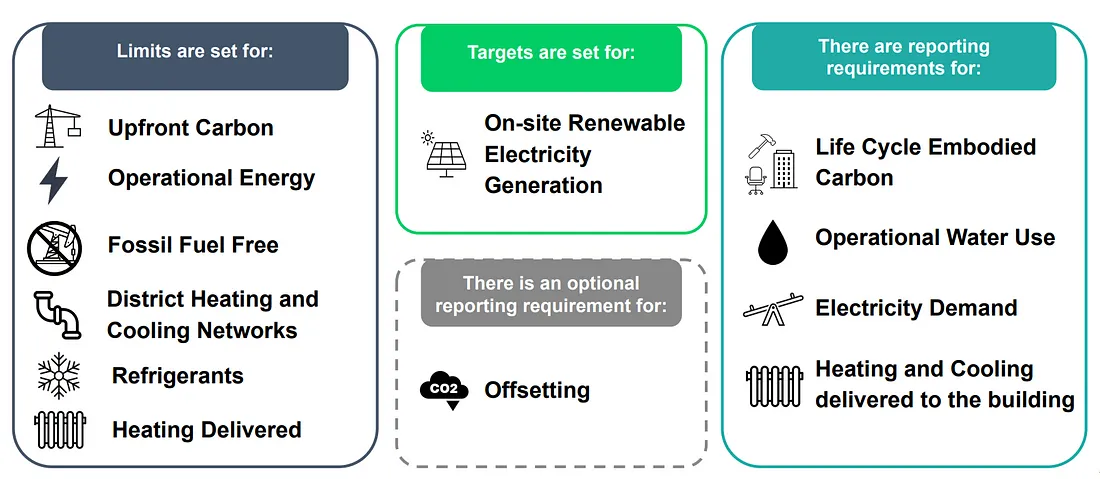The US Department of Energy Gives Lower-Carbon Building Materials Top Priority

Image Generated by DALL.E
Key takeaways:
- The US Department of Energy is investing $6 billion to make key industries like steel, cement, and others less polluting by funding eco-friendlier production methods.
- Cement production’s carbon problem partly lies in the raw materials used, not just energy consumption. New funding aims to find alternatives to these materials.
- Projects will explore new ways to produce cement without limestone and steel without coal, essentially aiming to innovate cleaner industrial processes.
- $910 million is allocated for developing and using construction materials with lower carbon footprints and for introducing sustainable technologies at land ports of entry, marking a significant move towards reducing the construction sector’s environmental impact.
The US Department of Energy announced that several dozen projects aimed at assisting in the decarbonization of the industrial sector and lowering the cost of environmentally friendly production will receive $6 billion from the Inflation Reduction Act and Bipartisan Infrastructure Law.
This covers the manufacturing of food and drink items, glass, paper, and chemicals, as well as iron, steel, and cement. The US Department of Energy stressed how difficult it is to decarbonize these sectors and how many emissions they produce.
A huge amount of energy is needed to make glass, steel, and cement. Typically, fossil fuels account for a large portion of that energy. The University of California, Berkeley’s Joe Shapiro, an environmental economist, countered that this isn’t the sole reason these sectors produce a lot of carbon emissions.
 Around half of the greenhouse gas emissions from manufacturing cement are from the carbon built into limestone, and not from energy or burning fossil fuels - Joe Shapiro.
Around half of the greenhouse gas emissions from manufacturing cement are from the carbon built into limestone, and not from energy or burning fossil fuels - Joe Shapiro.
Because the carbon is incorporated into the limestone, Shapiro explained, you would still have a lot of greenhouse gas emissions even if you could transition fully to using renewable energy to make cement.

Limestone materials that you can find on 2050 Materials Platform and track their impact on the environment
The US Department of Energy is financing several projects aimed at replacing limestone in cement production. along with innovative coal-free steelmaking techniques.
According to Steven Nadel of the American Council for an Energy-Efficient Economy, “it really is redesigning an industrial process.”
38 LPOE projects would be able to adopt modern sustainable technology and clean building materials with funding; 23 of the projects would be able to fully electrify standard building operations.
By incorporating clean construction materials and clean energy technologies into these projects, we’re not only supporting bringing these border stations into the 21st century — we’re also supporting the clean energy industries that will lead our economy in the future,” General Services Administrator Robin Carnahan says.
About $850 million for low-embodied carbon materials and $60 million for cutting-edge and sustainable technology will be included in the LPOE Inflation Reduction Act expenditures for 26 significant land port of entry modernization projects. Furthermore, the General Services Administration is spending an additional $100 million on low-embodied carbon materials for 13 pavement projects at land ports of entry.
How We Feel About This
The US Department of Energy’s emphasis on lower-carbon building materials aligns seamlessly with broader national and global efforts to mitigate climate change. Initiatives like these serve as critical building blocks for a more data driven future which is what 2050 Materials is all about. By reducing the carbon footprint of our buildings, we not only mitigate greenhouse gas emissions but also enhance the resilience of our communities in the face of climate-related challenges.
Sources:
Biden administration plan prioritizes lower-carbon construction materials — Construction & Demolition Recycling
Biden administration invests $6 billion in low-carbon industrial production — Marketplace
Related articles

Climate-Resilient Materials for the Built Environment: A Data-Centred Prime
As climate volatility intensifies, resilience metrics are fast becoming as critical as carbon data in material selection. This article outlines why adaptation is now a design imperative, how materials can be evaluated through a systems lens, and what KPIs project teams should demand. From self-healing concrete to fire-rated façades, we present a structured taxonomy of resilient materials, explain how to embed this intelligence into digital design workflows, and propose next steps for specification, benchmarking, and procurement.
Read more
The Release of the Pilot Version of the UK Net Zero Carbon Buildings Standard
In September 2024, the Pilot Version of the UK Net Zero Carbon Buildings Standard (NZCBS) was launched, marking a significant milestone in the decarbonisation of the UK’s built environment.
Read more
Research Deep Dive - Health Impacts of Quartz Products and Engineered Stone
This article dives into the health risks associated with crystalline silica in quartz and engineered stone, recent findings in the industry, and safer alternatives available for those looking to minimize health risks without sacrificing quality or aesthetics.
Read more